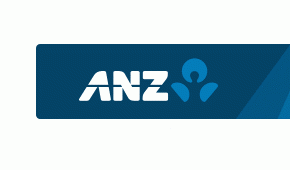
Having posted a 3% rise in half-year profit ANZ NZ, the country's biggest bank, is cautioning that chunks of the local economy face headwinds caused by the strong Kiwi dollar and slowing economic growth in key trading partners China and Australia.
ANZ NZ CEO David Hisco told interest.co.nz these headwinds are a watching brief for the bank.
"We just thought it was worth calling out that whilst commentators are calling it a rosy market which it generally is, there are still parts of the economy that will need to be carefully managed," said Hisco.
"I think we need to realise that whilst some parts of the economy are going along quite nicely, there are people within the economy (such as) tourism and exporters who are finding the higher dollar a bit more of a challenge. And then obviously China slowing down a little means that they will be probably a little more careful about what they're doing," Hisco added.
Against this backdrop Hisco suggested Prime Minister John Key trying to open trading in new markets is "exactly the right thing to do in terms of spreading our trading risk."
His comments came after ANZ NZ posted a $24 million, or 3%, rise in March half-year profit to $877 million. That's a fifth straight record high interim profit and compares to $853 million in the March half last year.
For ANZ NZ, the country's biggest rural lender, last week's cut in Fonterra's forecast milk price payout to $4.50 from $4.70 per kg of milk solids for this season is also in focus. The returns for Fonterra farmers are looking like being about $6 billion down on last year, when the milk price payout was $8.40.
"If we had a low payout for the next 12-18 months, then I think towards the end of that period it would start to really put stress on some farmers," Hisco said. "But we're staying close to all our customers and making sure we can help them wherever we can."
Marketshare growth
In a statement the bank said the profit result reflected marketshare growth in both lending and deposits, confidence in the economy and continued productivity gains within ANZ NZ.
Net interest income rose 4% to $1.422 billion, and total operating income was up 1% to $1.931 billion. Operating expenses increased 2% to $739 million. Provision for credit impairment came in at $31 million for the half-year, versus a write-back of $39 million in the same period of last year.
CEO David Hisco said the ongoing simplification programme following the culling of the National Bank brand in 2012, putting the ANZ and National banks onto one IT platform, and drastically reducing the number of products on offer from the combined bank, is continuing to benefit the bottom line. On top of this the adoption of new digital technologies for both customers and staff are contributing to productivity improvements.
ANZ NZ said its cost to income ratio for the half came in at just 38%.
"We have maintained our momentum into 2015 with a strong first-half performance. Confidence among businesses and consumers is lifting economic activity and lending volumes," Hisco said.
Net loans grew $3.5 billion, or 3% between September 30 last year and March 31 this year to just over $109 billion. Customer deposits increased a shade under $4 billion, or 5%, to $80.3 billion.
The bank said its share of the home loan market rose to 31.2% at March 31 from 31% a year earlier, and its share of the credit card market increased to 28.9% from 28.4%.
| ANZ NZ | March 2015 | Sep 2014 | March 2014 |
| Net interest margin | 2.27% | 2.29% | 2.32% |
| Cost to income ratio | 38.3% | 39.8% | 38.1% |
| Return on assets | 1.05% | 1.10% | 1.10% |
| Gross impaired assets as a % of gross loans | 0.48% | 0.67% | 0.82% |
Smith defends Asian strategy despite challenges
Meanwhile, parent the ANZ Banking Group, also posted a 3% rise in half-year net profit after tax to A$3.5 billion. Group CEO Mike Smith, said the current environment presented some challenges with lower growth likely for the foreseeable future with occasional volatility and shocks.
He said the twin impacts of expansionary monetary policy on institutional lending margins and lower commodity prices on trade volumes, were being felt at ANZ's international and institutional banking arm.
However, Smith defended the group's "super regional" strategy that has a strong focus on growth in Asia, which has come under question.
"This environment presents some challenges, however we are confident about the benefits of our super regional strategy over the longer term and the opportunity to continue to improve financial performance in the near term," said Smith.
The ANZ group is "increasing the pace of execution" of its super regional strategy within international and institutional banking to improve returns, added Smith.
The group interim dividend was increased 4% to A86 cents per share, meaning a payout to shareholders of A$2.4 billion.
Here's ANZ NZ's press release.
Here's the ANZ group investor presentation and here's the ANZ group press release.


We welcome your comments below. If you are not already registered, please register to comment.
Remember we welcome robust, respectful and insightful debate. We don't welcome abusive or defamatory comments and will de-register those repeatedly making such comments. Our current comment policy is here.